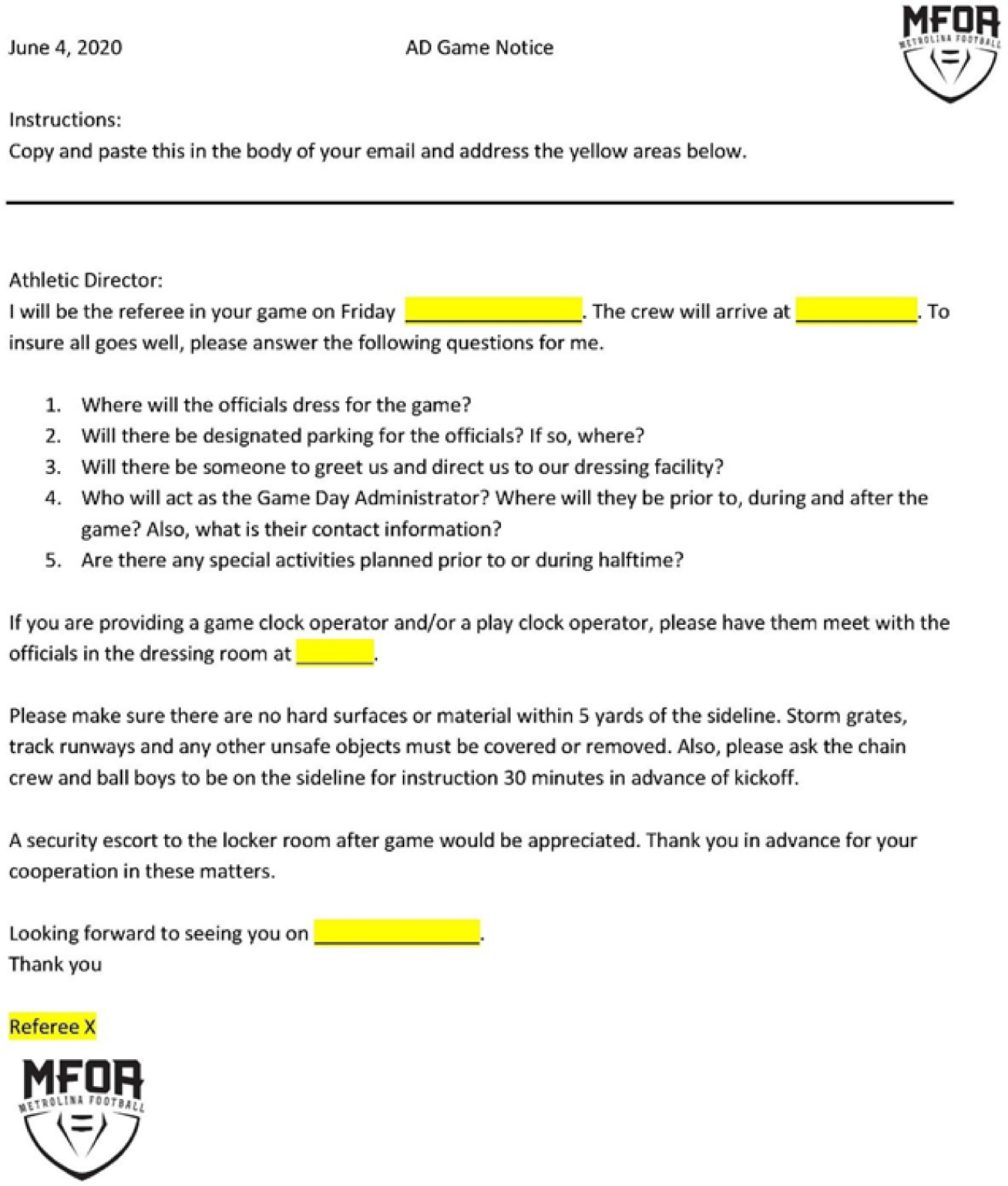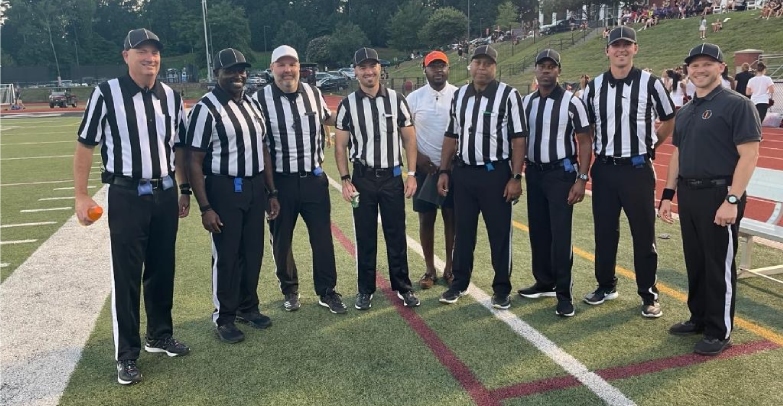POSITIONS
POSITIONS
WINGS | LOS | BREAKOUTS | BACKFIELD | BACKJUDGE
The Passing Game
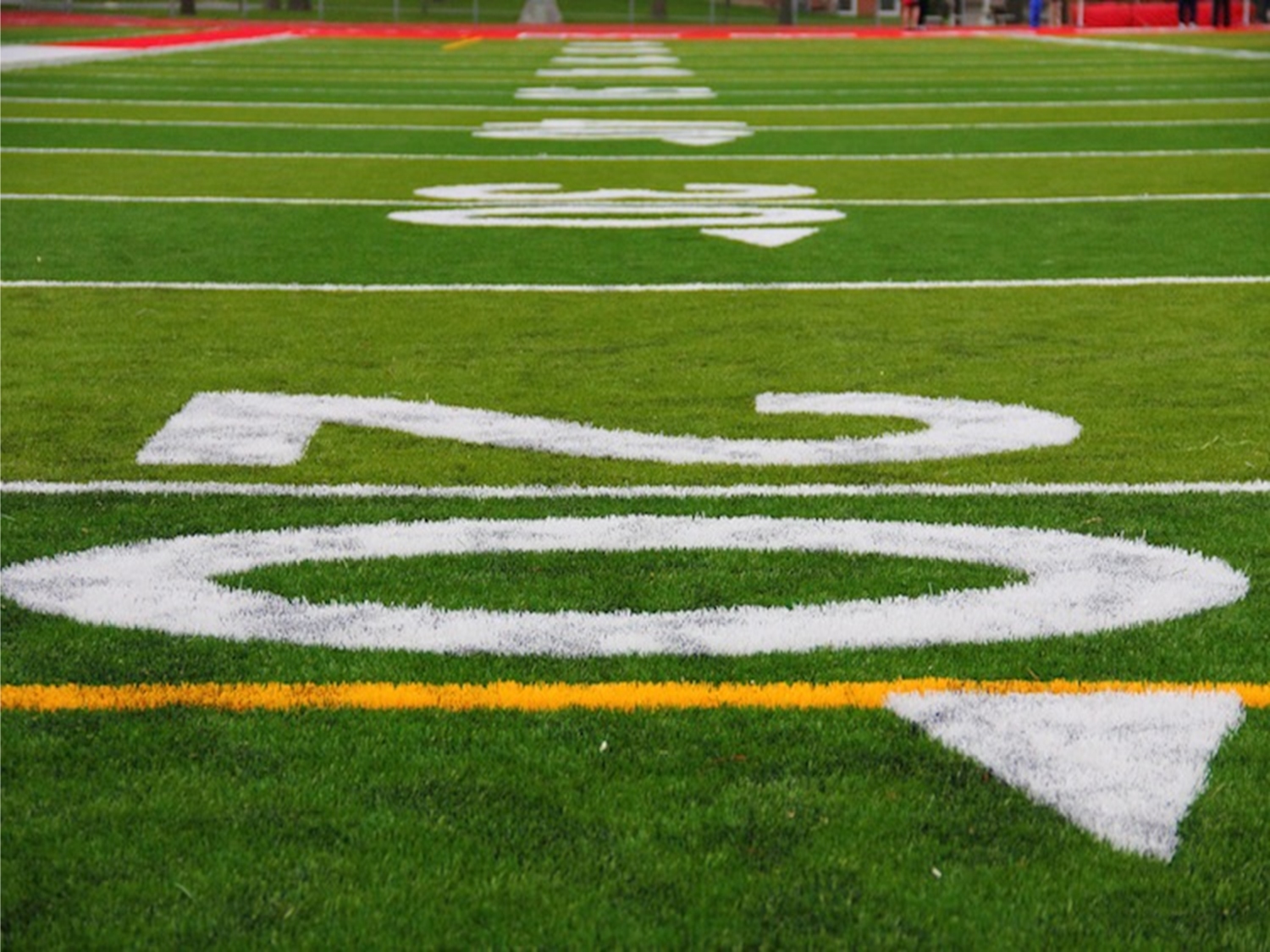
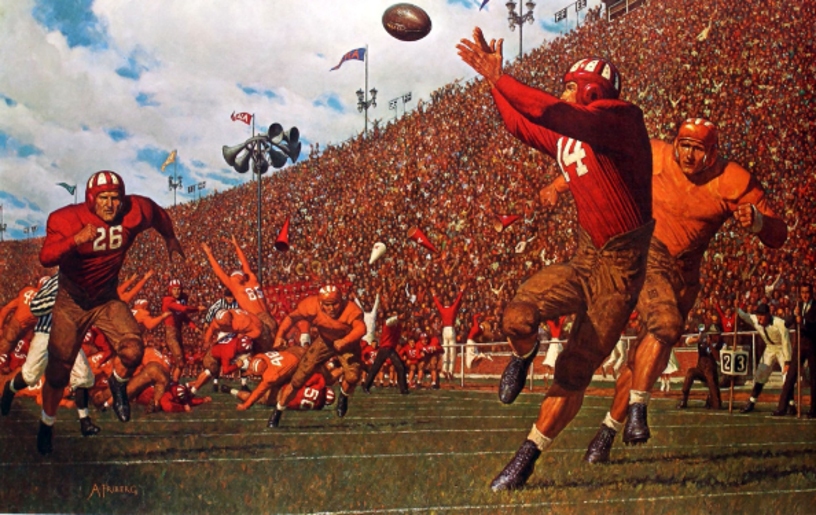

2. Sidelines & End lines
3. Ineligible Downfield
4. Illegal Forward Pass & Int’l Grounding
5. Defensive Pass Interference
6. Offensive Pass Interference
7. Endzone Lines Coverage

- Keys🡺 The officials “initial responsibility” at the snap.
- Strong Side🡺 Side of the formation which has more eligible receivers to it.
- Balance Formation🡺 When there are an equal number of receivers to each side of the QB. (RB Behind QB)
- 1,2,3,4,5🡺 The numbers we will use to identify players.

- Back Judge🡺 Keys to the LJ Side of the field.
-Has 1 & 2 on the LJ Side - Line Judge
-Has 2 & 3 on their side of the field - Linesman
-Has 4 & 5 on their side of the field.
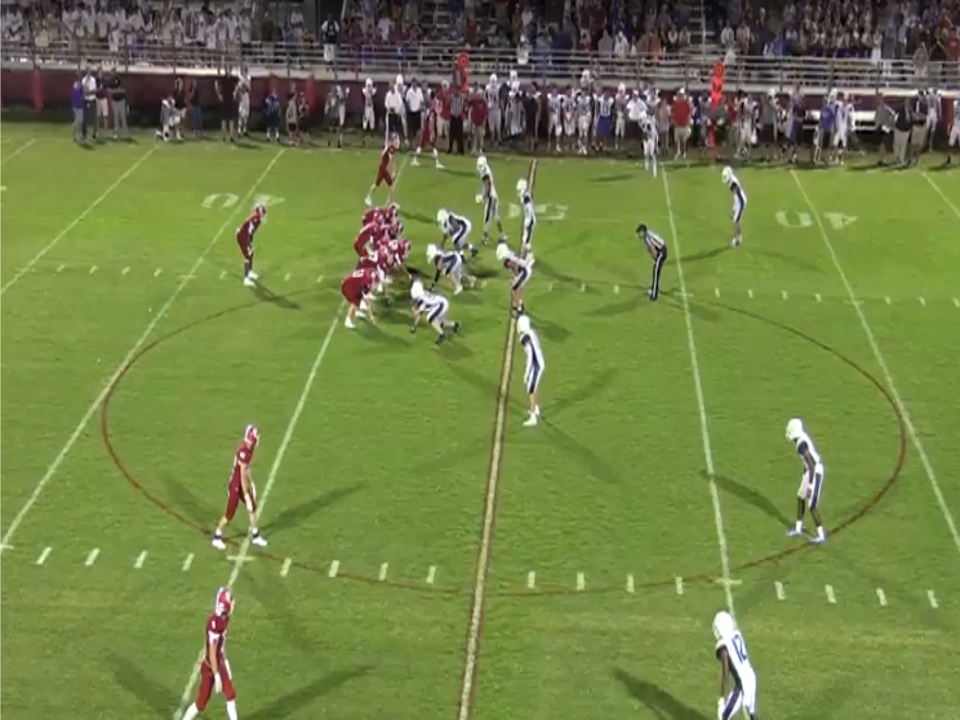

- Back Judge🡺 Will key to the Linesman side of the field.
-Has 1 & 2 - Linesman
-Has 2 & 3 - Lines Judge
-Has 4 & 5 on their side of the field.

- Back Judge🡺 Will key to the strong side of the formation. Will have 1 & 2
- Linesman & Lines Judge
-Will have 2 & 3 or 4 & 5 depending on which side the strength is to.
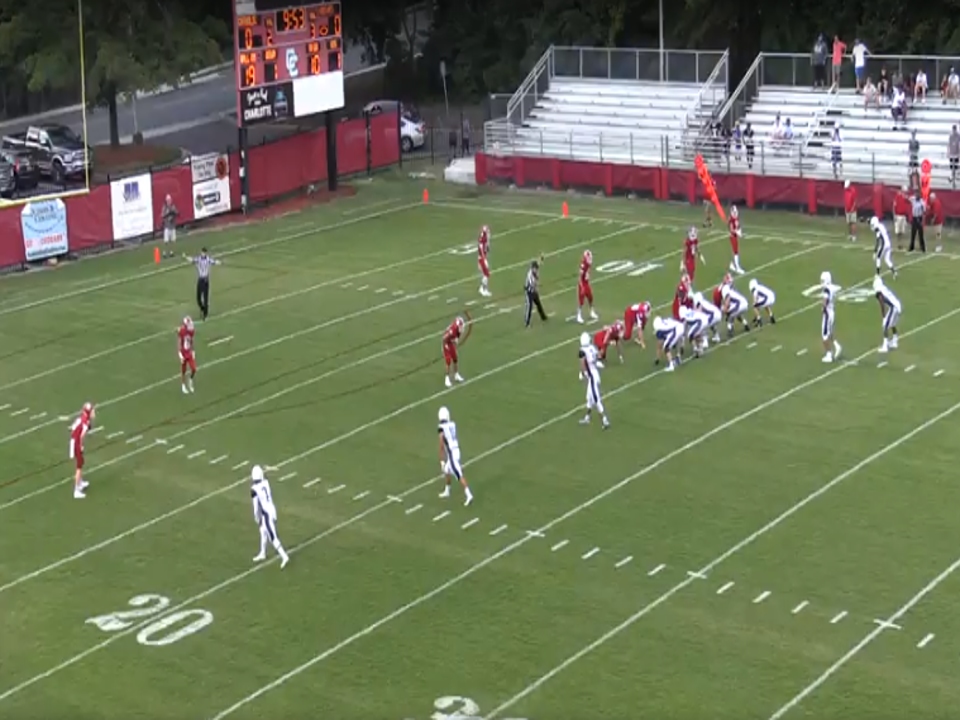

- Stops Before the Snap🡺 The Crew re-keys based on the formation.
- Still in Motion at the Snap🡺 We take a snapshot at the snap and that is who we key off of.


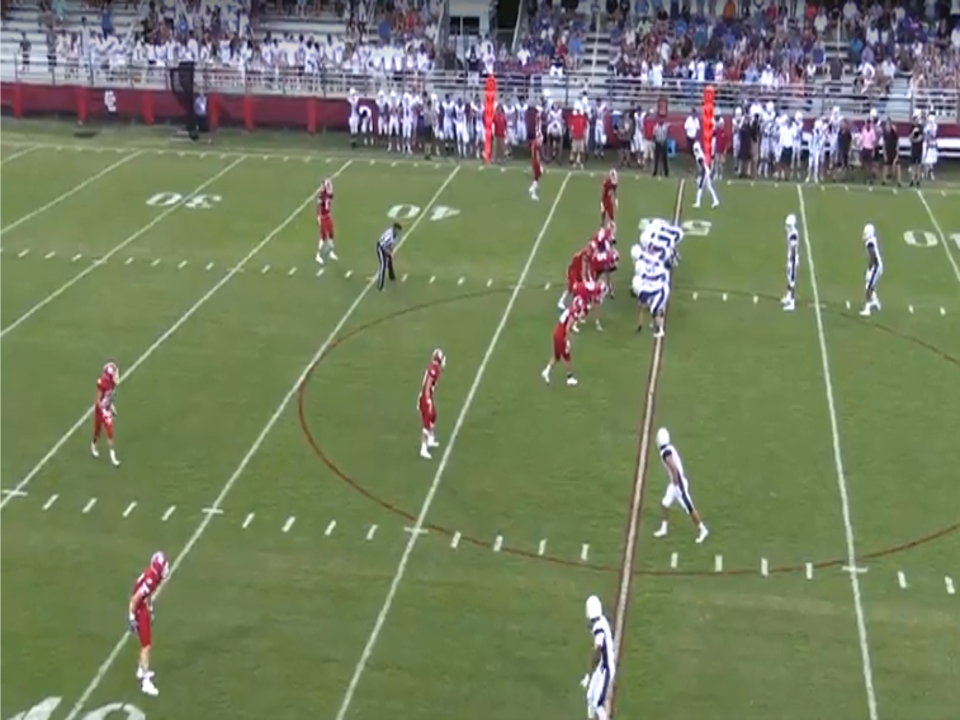
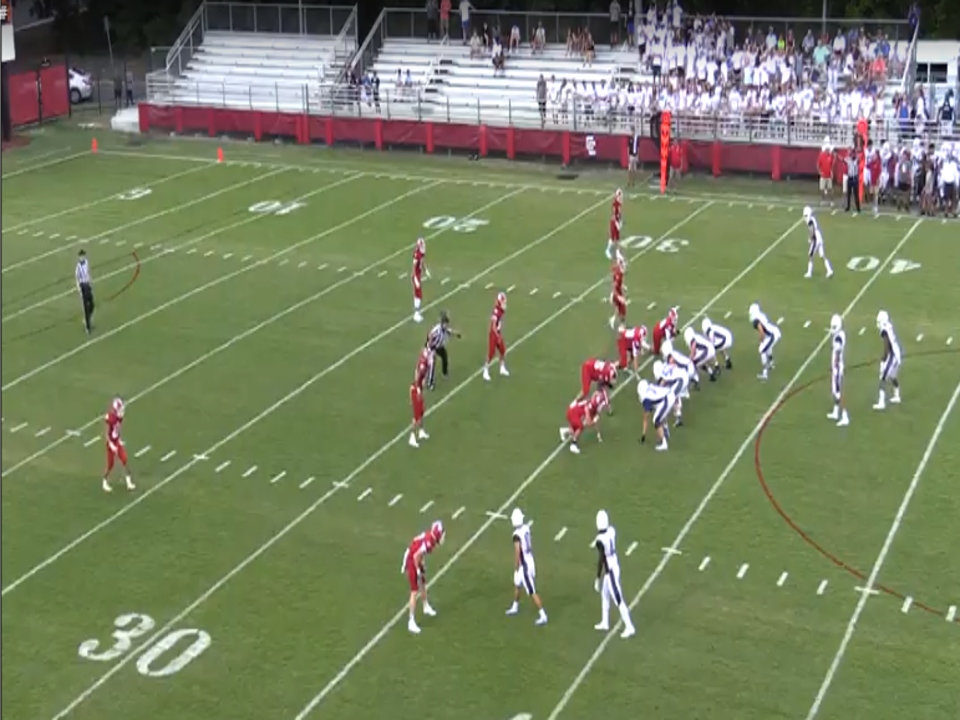
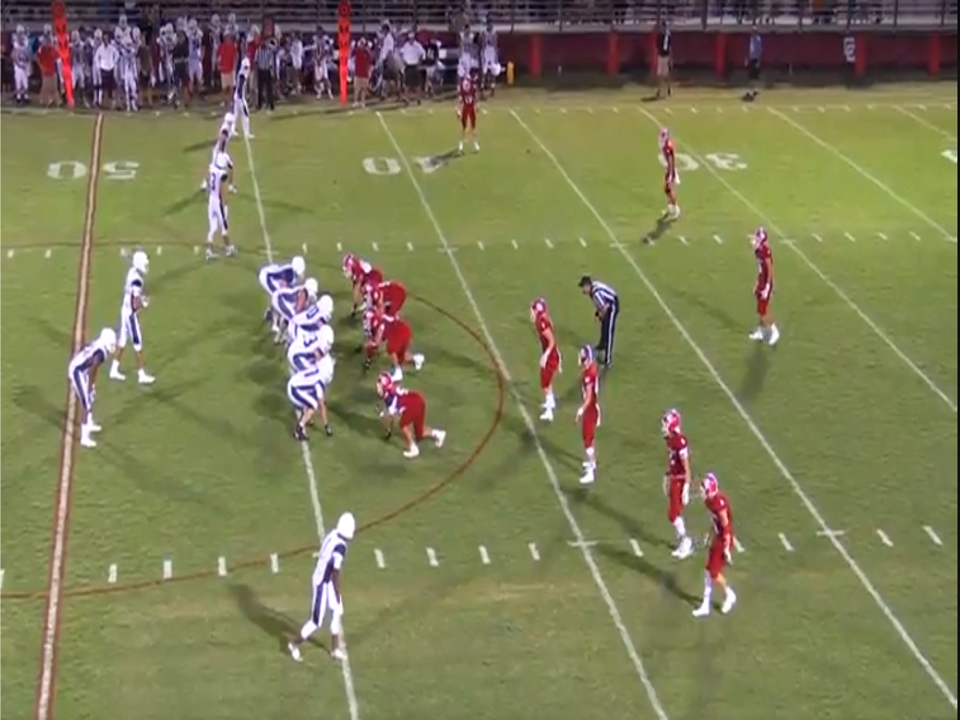


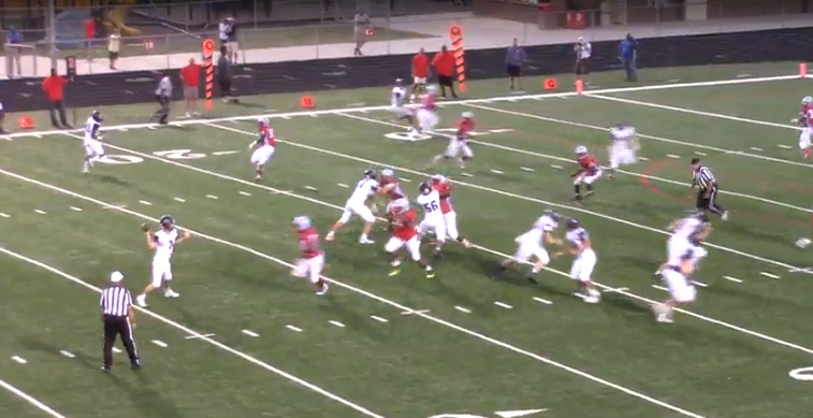

- Ineligible A players may not advance beyond the expanded neutral zone on a legal forward pass play before a legal forward pass that crosses the neutral zone is in flight.
-If B touches the pass in or behind the neutral zone, the restriction is terminated. - How many yards downfield can an ineligible be?
- What if the pass is completed behind the expanded neutral zone?

- A second forward pass during a down.
- A pass after a change of team possession.
- A pass from beyond the neutral zone.
- A pass intentionally thrown to an area not occupied by an eligible receiver.
-Intentional Grounding - A pass thrown to conserve yardage or time.
-Spiking the ball from under center is legal!

- Early Contact
- Playing Through the Back of a Receiver
- Grab & Restrict
- Arm Bar
- Cutting of the Route
- Hook & Turn

- Initiating contact with a defender by shoving or pushing off which creates space.
- Driving through a defender who as established a position on the field.
- Blocking downfield during a pass that crosses the line of scrimmage.
- Picking off a defender who is attempting to cover a receiver.

- The BJ Always has the End line for determining if a catch is completed.
- The LJ or HL should NEVER have information if they were in or out-of-bounds.
- Can provide information relating to if the player caught the ball.
- Communication is KEY!!!!!

- The LJ or HL Always has the side line for determining if a catch is completed.
- The BJ should NEVER have information if they were in or out-of-bounds.
- Can provide information relating to if the player caught the ball.
- Communication is KEY!!!!!

- Come together and provide info quickly.
- Give a signal and move on!

- You know 100% that the pass is incomplete, signal.
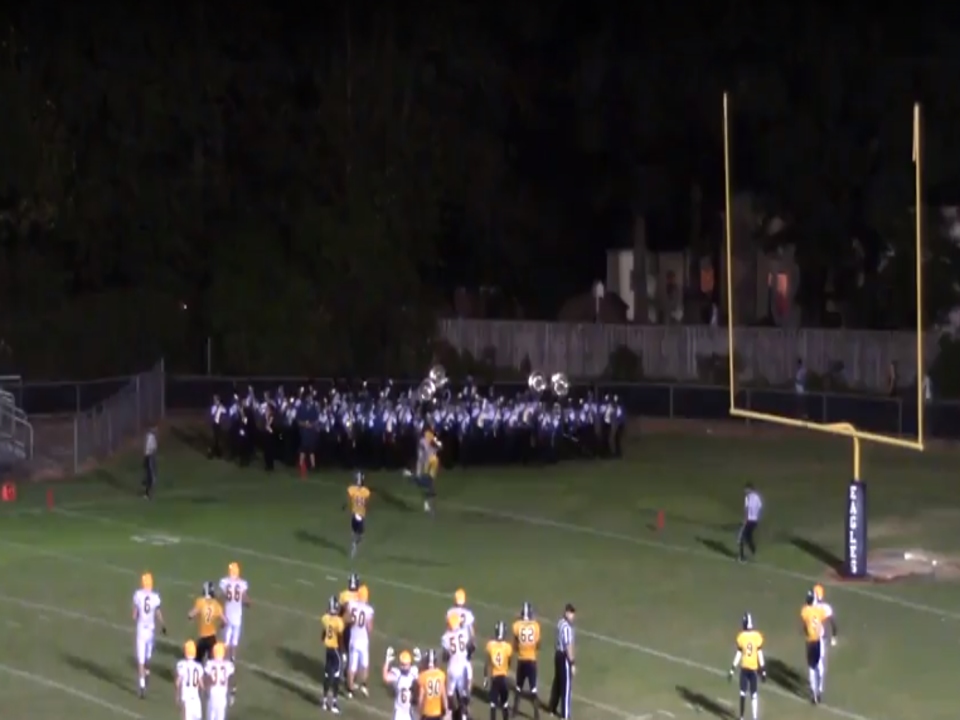

Click here to download a PDF version of The Passing Game.
Working The Wings
• If a receiver is at the numbers on your side, you can widen your “cone of vision” by thanking a few steps back
• Start with a cushion and maintain it throughout the play
• Stake your claim on the Three-yard belt and treat it like your office. That is where you are working
• When coaches start creeping up, move back and politely ask them to do the same
• Stepping back makes sure you are not part of
the play
• As the play progresses, maintain your distance and
shuffle step downfield
• Shuffling keeps your chest directed to the field and facing the runner/blockers
• Remain off the field and slightly behind the runner
• Once the runner breaks well beyond the line of scrimmage, turn and follow behind
• Until the runner is contacted by opponents, watch the players around the ball for illegal acts
• If the runner is forced out of bounds, stop and let him pass. Then turn toward the players while giving the stop clock signal
• Keep your eyes on the players and bring them back if necessary
• Wait for the players to clear the sidelines before you do anything else
• Happens on the majority of scrimmage plays
• Move downfield to the forward progress spot as soon as you can
• Never jump over players
• If it’s your “hard spot”, mark with
downfield foot for fellow wing
• Mirror slightly behind the line if it’s your “soft spot”
• Try to meet the runner at goal line when threatened
• When ball snapped at 5yd line or closer, first move is toward the goal line
• Stop just short of the goal line, but close enough to see down the line
• Do not step into end zone unless the ball
crosses
• Crash hard if the runner is down close, in or out (signal)
• Only one official should signal Touchdown
• Don’t signal unless you are sure the ball crossed in A’s possession
• Nothing matters after the ball breaks the plane (fumbles, progress, etc). Touchdown
• Know where the line to gain is
• Be aware of “short 5” situations
• Treat the line to gain like the goal line when critical
• Hard crash when runner is down close
• If it’s your spot, ask for the ball and
place on your downfield foot
• Verbally inform Referee “First down” or “short” while giving signal (stop clock or next down)
• Forward progress for an airborne receiver is the spot where he gains possession and maintains control of the ball
• On a bobble, progress is the spot where he last gains possession
• If carried, not pushed, out of bounds, spot is where he crosses the plane of the sideline
• Runner contacted by opponent and crossing sideline moving forward has been forced out of bounds and the clock is stopped
• Runner contacted by opponent and crossing sideline moving backward is deemed stopped in the field of play and the clock continues. The spot is where the runner reached before being driven back
• For a runner who is still touching the ground inbounds, the goal line plane is extended out of bounds. Therefore, the ball can score when the ball crosses goal line extended, outside the pylon
• For a runner in possession of the ball, airborne, is out of bounds where the ball crosses the sideline, even if he crosses the goal line extended
• Spot is where hip, elbow, knee, forearm, or shoulder contacts the ground
• The is no rule to protect a QB who scrambles beyond the line and slides to “give himself up.” The running QB is treated as a runner and loses passer status.
• Can still be protected from targeting
• R and LJ under uprights
• HL on K line
• R and LJ under uprights
• HL on K line
unusual rulings or situations
• Keep all communications brief and professional; no personal commentary
Click here to download a PDF version of Working The Wings.
LOS CLINIC

-Kick Off
-Scrimmage Kicks
-PRE-SNAP
-SNAP-TACKLE-KEY
-Running Plays
-Passing Plays
-FILM REVIEW-

2. Clock, Score, REG/ONSIDE
3. Count the R players-confirm with R
4. Work from the back of the white line- zone
5. Think….. Fair catch, MUFF, KOB,holding , fumble,BBW, IBB, player OOB, KCI.
ONSIDE- LJ-K HL-R first touching by A , Illegal procedures, encroachment, illegal block.
6. When touched beyond neutral zone by R, wind, spot, kill clock, show possession
7. Stay in position let ball get in front of you.

9. Touch back if ball breaks endzone,
10. Protection for player giving fair catch,
11. BBW, BSB, holding,
12. LOS get blocks, What is the first threat…. Then the second threat
13. Assume he will muff the ball stay on the line.
14. Stay in zone, the players will take you to the action.
15. Does he have a brick in his hand, (out of position, beat, running behind the play)

2. Spot, Dead ball officiate,
3. Count, establish LOS,
4. Know your eligible numbers
5. 100% LOS fouls
6. LOS should have a good formation, 4 or less in backfield
7. Long kicks- BIB, BSB, BBW, short kicks holding, KCI
8. Short wings should be watching the LOS for fouls, Drift down field based on how much A gets down field against B. 10-15 LJ release at possession by Punter, HL waits for ball to cross.

Clock, down and distance
Be 100% at pre-snap penalties, work the ball and go out.
Count, formation, 4 or less, Where is my key+ Who is gonna jump offsides.
Flag mechanics, whistle, flag, kill clock,

TACKLE= He tells us run or pass
KEY= Is my key free of foul, let them declare, next match up, Zone- let them declare
ZONE= FOUL- Status of the ball- FOUL

Officiate match up to match up.
Watch who gets beat.
Double team- move to next threat.
Check off on every block in your zone.
Know the status of the ball, before you throw a foul.
Foul = Point of attack, material to the play or safety

The further you are back the more you see.
Complete vs Incomplete
Forward vs backward
Behind vs Beyond

BACK JUDGE will take the strong side of the formation.
Double double-one back- Back Judge will take LJ side of formation.
If you are the weak side you will always have 1,2 or 1
Strong side you will have 2,3 or 3,4
Stay with your key if he is not free from foul.

2 Sets of hands, two sets of eyes no foul
DPI- arm bar, cut off, not playing the ball, early contact, hook and turn, grab and restrict,
Incidental contact, if defender is not looking at ball DPI. If both are looking back, incidental contact.
OPI-Blocking down field, separation, pick play

Click here to download a PDF version of the LOS Clinic presentation.
REFEREE BREAKOUT
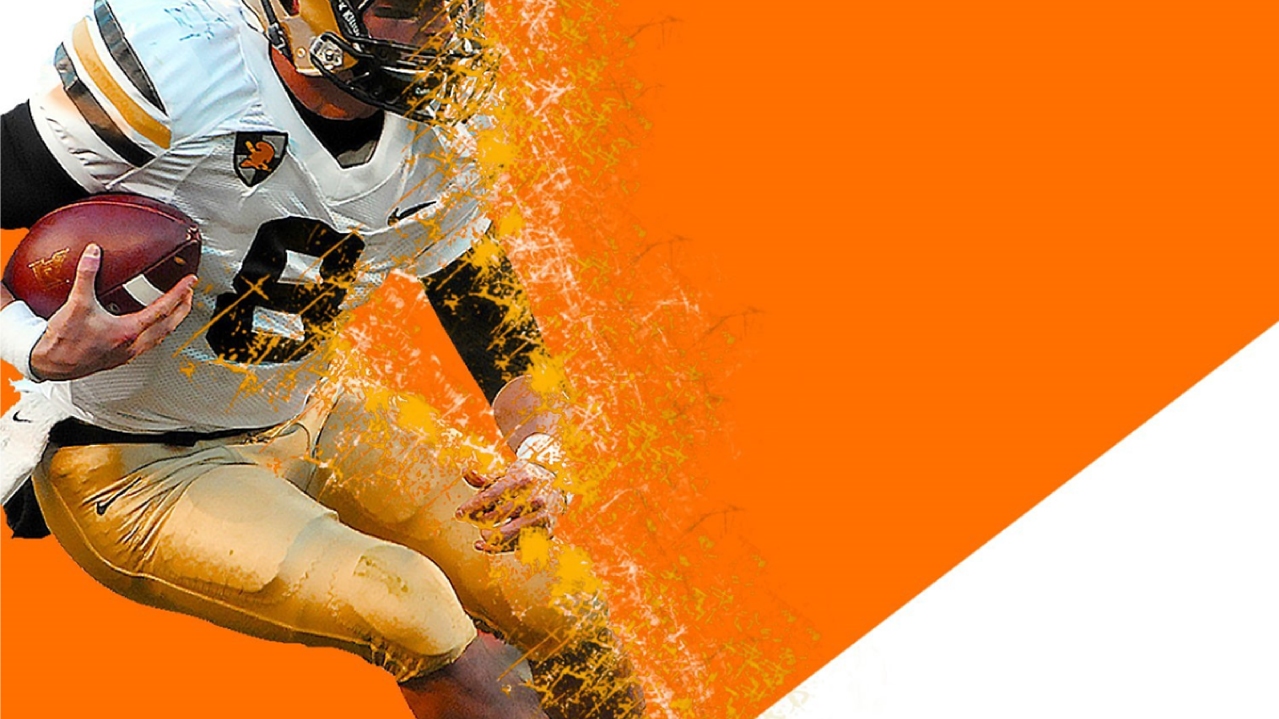

2. AD Letter
3. Pregame Meetings
4. New Rule and Points of Emphasis
5. Radio Communication
6. Discussion
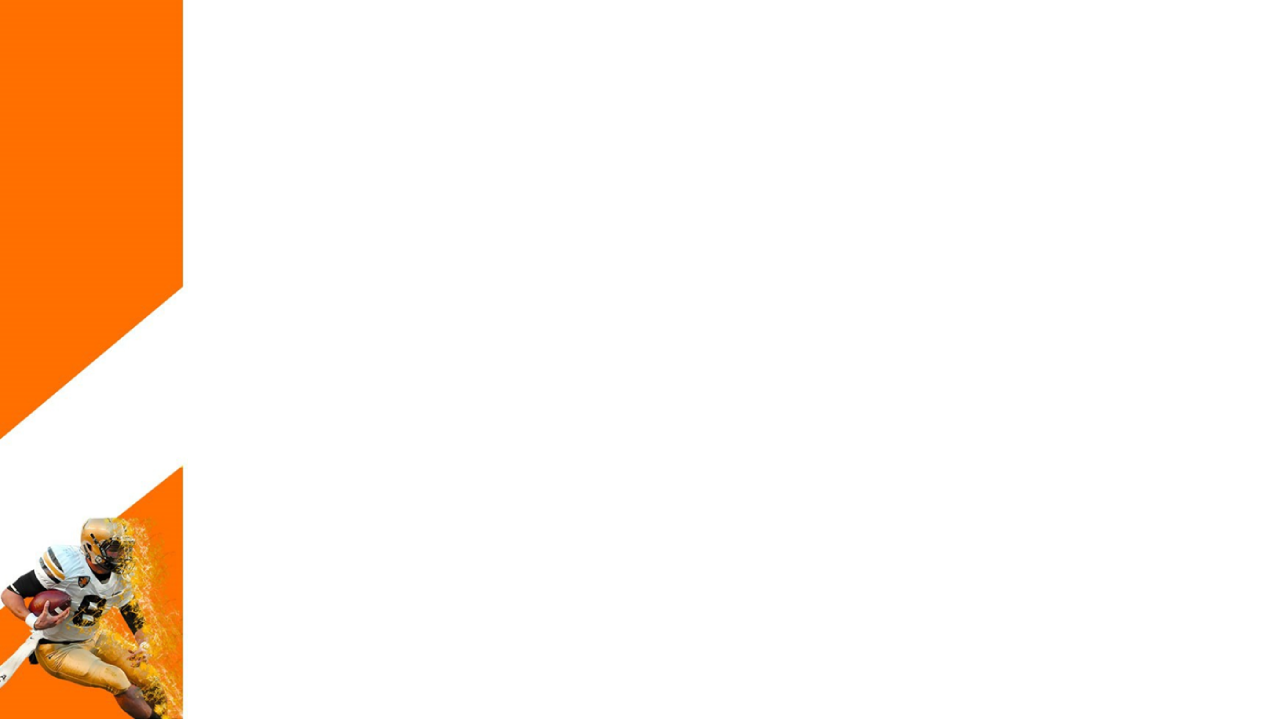
• Playing field
• Safety issues (objects too close to field)
• Marked incorrectly
• Dressing facility
• Cleanliness
• Showers provided?
• Secure?
• Lack of security before and after game
• No drinks/food provided
• Before, halftime and after game
• Unusual plays or penalty enforcements
• Play or game clock operators
Crew Chief will email entire group by Tuesday evening with reported issues.

• Game site?
• Combination of both

(2-17-2c (NEW), 2-17-4)
Action in the Free-Blocking Zone
Blocking below the waist now requires the block to begin immediately following the snap. (Under the current rule, an offensive lineman can delay and then block below the waist if the ball is still in the zone.)

When considering sportsmanship, many may first think only of the game participants (athletes and coaches) within the timeframe of the game. Although players and coaches are the most visible in their displays of sportsmanship, proper sportsmanship also includes public address Announcers, bands and spectators.
Intentional Grounding
Under NFHS rules, unless using the legal exception in Rule 7-5-2e, intentional grounding is a foul whenever a forward pass is thrown to prevent a loss of yardage or to conserve time or to an area not occupied by an eligible receiver. High school referees need to be aware of these situations and, with the help of the line judge and linesman, make the correct call under NFHS football rules.
Ineligible Downfield
Ineligible A players may not advance beyond the expanded neutral zone on a legal forward pass play before a legal forward pass that crosses the neutral zone is in flight. The neutral zone expands two yards behind the defensive line of scrimmage following the snap. When identifying A players who are illegally downfield it is important to make sure that the A player is clearly beyond the expanded neutral zone (2 yards) at the moment that the pass occurs.

• Don’t store with the antenna attached
• Don’t store loosely in your game bag
• Explore use of optional belly pouch (can replace using belt clip)
• Test/Experiment with Radio to insure that you are getting the most out of it
• Position of both radio on the belt and microphone on shirt (ease of use
and clarity)
• Prior to game test radios on field for clarity and to insure no one else is on same frequency

• Push Button-Hesitate-THEN Speak
• Keep messages brief and to the point
• Use appropriate/Professional language
Dont’s
• Talk at the same time as someone else
• Use while the Referee is communicating penalty announcements with a head coach or with press box)
• To replace Mechanics or Signals

• Ball placement (yard lines or position on the field 1-5)
• Line to gain confirmations (ex: runner is short or 1st down)
• Confirmation/Questions on rulings
• Clock/Time Management (ex: team requests/number of T.O. remaining or under 2 minutes and under 1 minute)
• Player foul reporting if simple (1 foul/1 number/no Change of
Possession)
• Penalty enforcement options/corrections (to and from the coaches)
• Goal line reminders (examples switches etc.)

• Positions on a try (example-legal numbers)
• Player conduct concerns (involve coaches to prevent flags/DQs)
Try to use radios during dead ball periods
Refrain from using while the ball is live or when the snap is imminent
Radios should be used to enhance communication, NOT to replace
necessary verbal communication

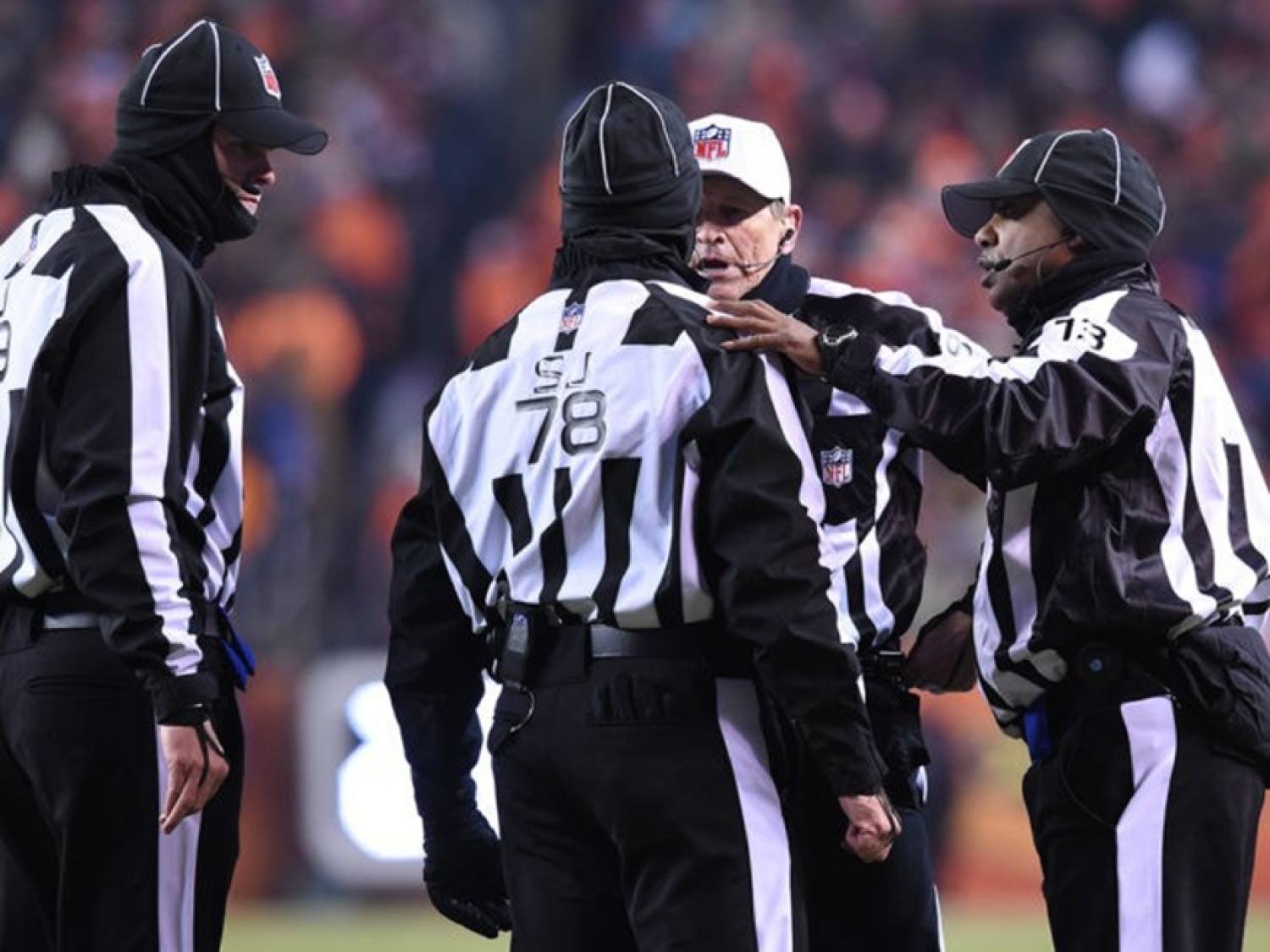
Click here to download a PDF version of the Referee Breakout presentation.
MFOA BACK JUDGE PREGAME CHECKLIST
Click here to download a PDF version of the MFOA Back Judge Pregame Checklist.
UMPIRE BREAKOUT SESSION
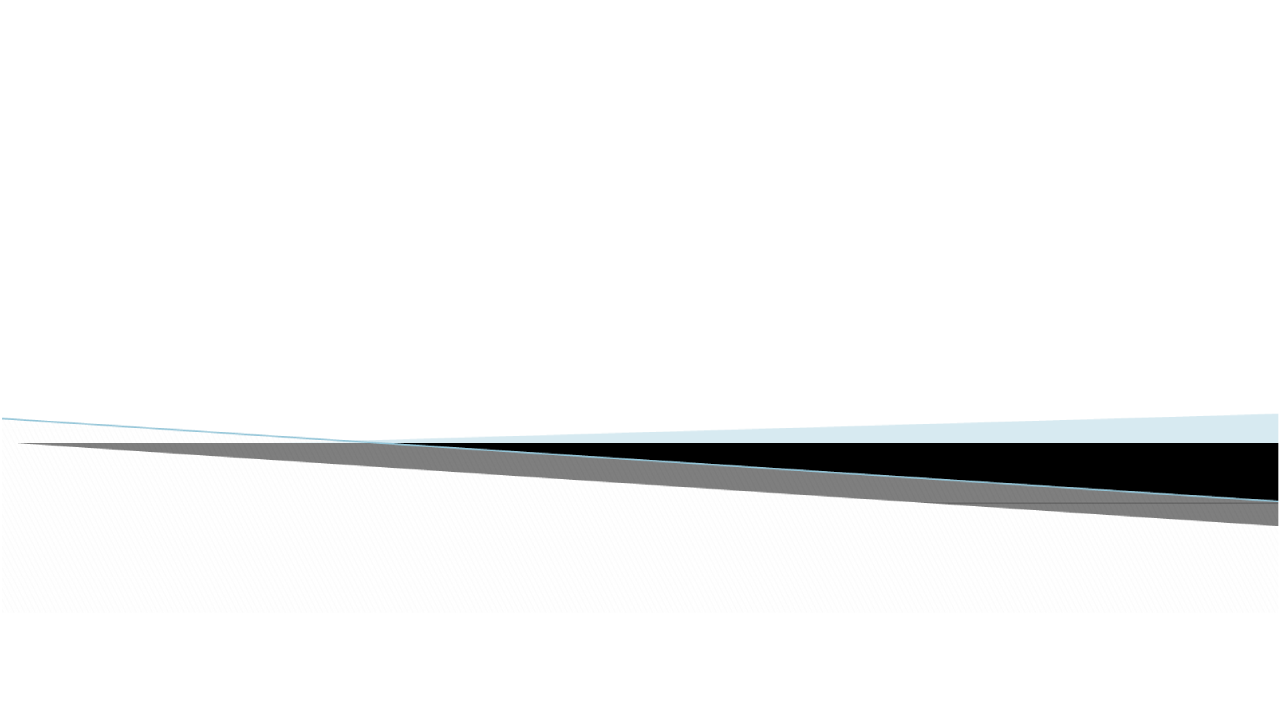

2021 Points of Emphasis and New Rules
Position & Focus
Free Kicks
Scrimmage Kicks
Scrimmage Plays
Mobility
Outside the Hashes
Ball Rotation
Rule of 2
Rule of 3
Fouls
Keys & Focus
Mantras

2021 Rule Changes
◦ 2-17-2c Blocking Below the Waist
◦ 1-5-1b3 Jerseys
D 2020 Review
◦ 7-1-9 Disconcerting Acts
◦ 7-5-2 Conserving Time
◦ 1-4-2 Penalty Decisions
◦ 3-6-1a 40/25 Play Cock
◦ 7-5-12 Ineligible Receivers

2021 Rule Changes
◦ 2-17-2c Blocking Below the Waist
-will await NCHSAA interpretation
◦ 1-5-1b3 Jerseys
-if the home team jersey is close to white..notify RCB
D 2020 Review
◦ 7-1-9 Disconcerting Acts
-Speak to teams early when possible. Actions should be big and obvious to merit this foul and should also create an advantage to the defense

Sportsmanship
● Pre-Game to Post Game inside the Stadium to the Field
Intentional Grounding
● High School rules differ from Televised Game days
Ineligible Downfield and Line of Scrimmage
● Expanded Neutral Zone,
● Screens and Swing Passes (LOS)
● Offensive Formations (50-79 Five Men on the LOS)
● Only 4 in the Backfield

Ineligible Downfield and Line of Scrimmage
● Foul does not occur until an ineligible player is more than 2 yards beyond the LOS at the RELEASE of the football
● Move into a position that players beyond you at the release of the ball are “downfield”
● Do not guess
● Have knowledge of whether the pass is caught behind the LOS
● If ball is caught behind LOS or touched by B, there is no foul

Proper MFOA Positions- Free Kicks
● Importance of Hash Mark
■ Move quickly at 45% angle into field of play. Do not exceed hash or move too deep or shallow
■ Short Kicks towards your direction - you do not need to leave sideline
■ Interior View
■ On long returns, allow play to pass you, like a standard scrimmage play
● Primary Keys (Deep Kick) - Closest 3 of the front line of B
● Pooch Kicks- Look for Fair Catch Signals
● Onside Kicks
■ Primary Keys- Ball (if towards you), blocks (if away from you)
■ If crew has moved into onside formation and kick goes deep- umpires are required to be the ones to “get back” and work the sideline
● DO NOT BALL WATCH

Proper MFOA Positions- Scrimmage Kicks
● Initial Position-Pg 48 NFHS Game Official Manual
■ 10 Yards Deep outside the Tackle Box to Line Judge side
■ Move yourself in position to see the ball clearly
● Initial Key
■ Know the numbers of your 5 “lineman”
■ Protect the Snapper- “running thru the shoulder” is not roughing
● After the Snap
● Look for holding by K
● When first wave of players pass, quick turn towards Head Linesman Side & look for fouls
● On long returns, attempt to place yourself close to LJ side hash, then allow play to pass you...trail and look for fouls
● DO NOT BALL WATCH

Proper MFOA Positions- Scrimmage Plays
● Initial Position
■ 5-8 yards off the ball. Adjust to linebacker depth
● Initial Key
■ Guard-Center-Guard
■ Have a view of the ball to watch for snap infractions
● After the Snap
■ Focus on Keys
■ Adjust focus with “flow” of the play
■ Help with Referee-side Tackle when possible
● Line of Scrimmage
■ Move towards line of scrimmage on passing plays
■ Have knowledge if QB crosses the line on passes
■ Have knowledge if pass is caught behind the line

Proper MFOA Mobility (#1 Complaint about MFOA Umpires)
● MUST BE WILLING AND ABLE TO COME OUTSIDE THE HASHES
● Line of Scrimmage
■ Move towards line of scrimmage on passing plays
● Ball Rotation
■ Always know what sideline the next ball will be coming off of
■ Move outside the hashes to shorten the length of throws from wings
■ Ok to allow ball boys on the field following kick plays only
● Rule of 2
■ If a play ends from the numbers to the sideline, there needs to be 2 officials there to separate players...if you are the 3rd Official back out to the hash and await relay
● Rule of 3
■ If a play ends beyond the sideline, there needs to be 3 officials there to separate players…..if you are the 4th official, back out to the hash and await relay

MFOA Foul Reviews
● Holding
■ Focus on Point of Attack and Advantage Gained
■ Does the hold restrict the player and/or “take away a step” from the defender?
■ Look for snap down fouls by offensive lineman (it’s being taught)
● Hands to the Face
■ Initial Hand placement of either lineman can lead to quick identification of this foul
■ What caused a player’s helmet to come off (Don’t guess or assume)
● Blindside Block
■ For Umpire’s this is a very common foul on kicking plays we should detect
● False Start
■ Umpire’s do not call encroachment
■ If both sides move, come into discuss and provide information. Did offense move first? (most likely False Start) Did defense move first? (ask the wing if they crossed)

MFOA Foul Mantras
● Quality not Quantity
● Highest Importance is on Safety
● Focus on Advantage Gained and Point of Attack
● Calls that Umpires should rarely, if ever, call
■ Encroachment
■ Roughing (excluding Roughing the Snapper)
■ Targeting
■ Facemask (excluding Hands to the Face)
■ DPI
Click here to download a PDF version of the Umpire Breakout Session.
UMPIRE BACKFIELD

NCHSAA
April 27, 2016

• If the ball goes outside the hash to the R’s side, the U simply goes to the hash to wait for the ball to be relayed to him by the R or B. B, make sure you don’t give up the deep pass before moving to assist with relay.
• If the ball goes outside of the hash on the U’s side, the U or the B will relay the ball into the R who will spot the ball and move off the ball as the U is coming toward the ball. The R will then mark it ready for play. If the R is caught up in a chicken fight, game administration, etc, the U will get the ball or may get it from the B and spot it. It’s not complicated, just flow……

• If we are in a no huddle situation, hurry up, etc., the U will stay in the “A” (between guard and center) until R waves him off and then marks it ready for play. This will prevent the ball from being snapped before the ready.


2. The Umpire will be in the traditional position when the ball touches the PLUS 10 yard line or closer when it is goal to go. He will help the wings on runner crossing goal line on quick dive plays, etc.
3. In 4 man private school games, the U goes to his traditional spot behind the defensive line. In all 5 man crews, the U will adhere to these mechanics.

• The U can help with ineligibles downfield, but the Linesman and Line Judge should share in this responsibility also. Wings should not release the line of scrimmage until the ball is released on a pass to help with this responsibility. By doing this, the wings also give us added coverage on quick passes over the middle when we would have to rule on a trap or catch.

Click here to download a PDF version of the Umpire Backfield presentation.
